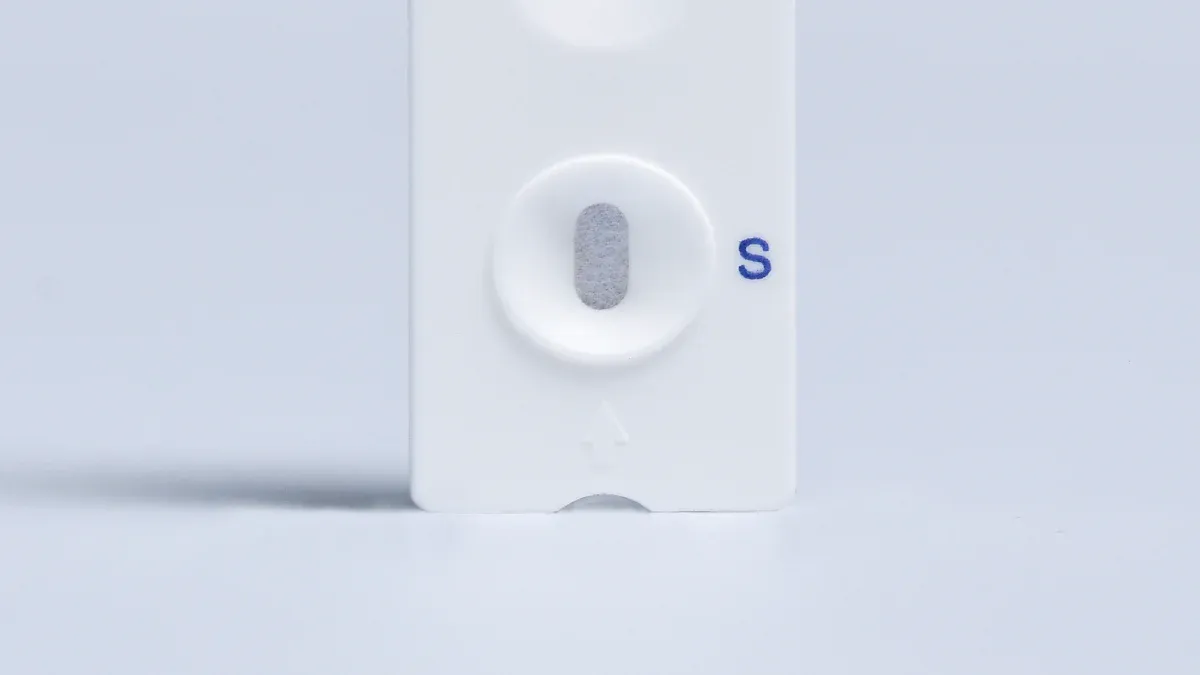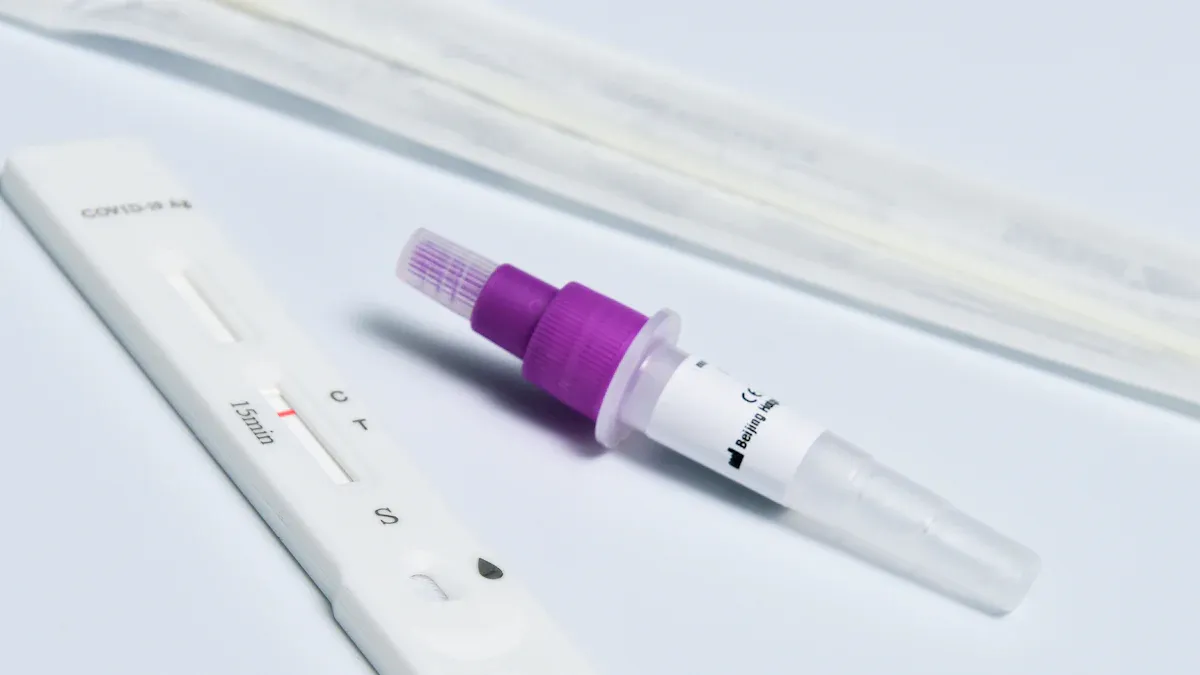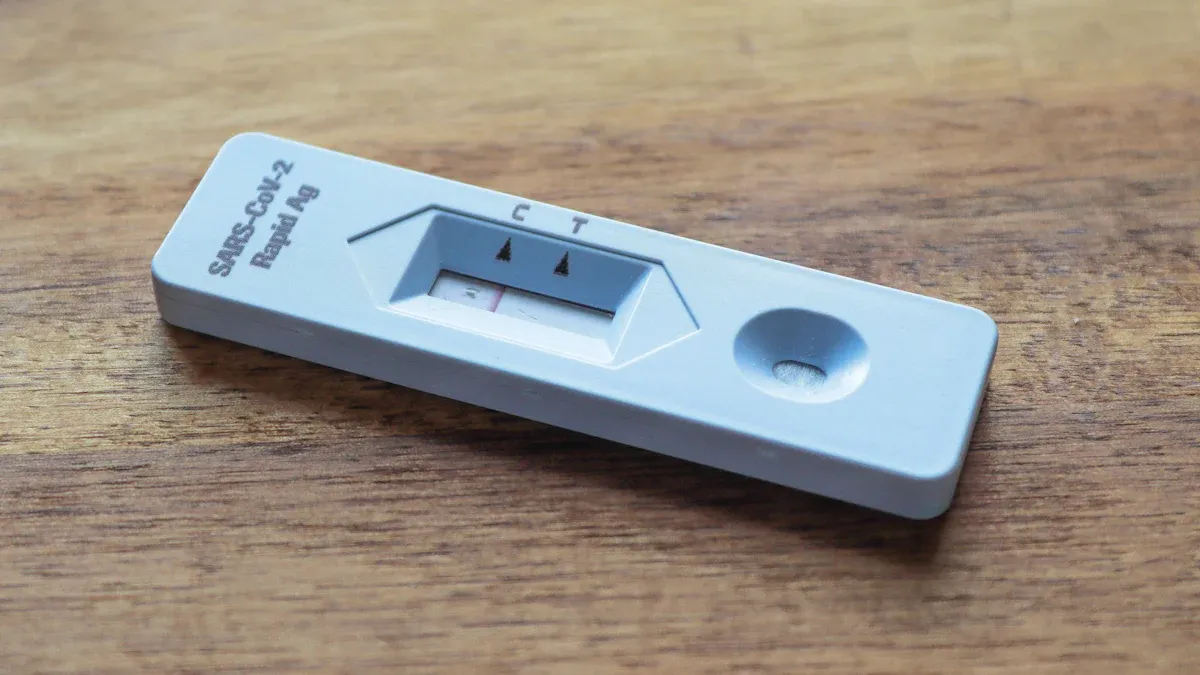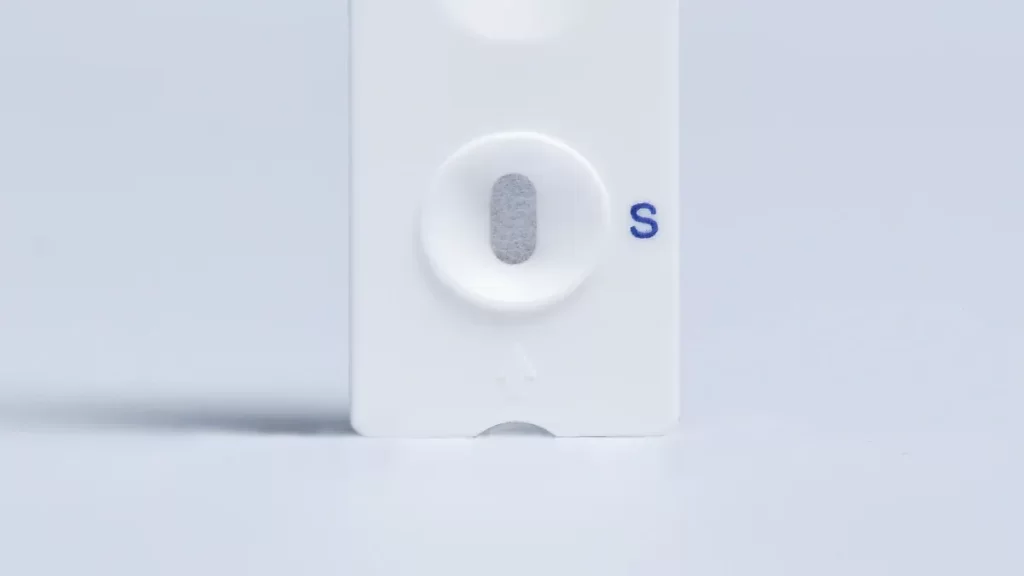News & Events
A Guide to IgE and IgG Antibodies in Lyme Disease Testing

IgE and IgG antibodies help your immune system respond to infections like Lyme disease. You need antibody testing because it helps doctors spot exposure to Borrelia burgdorferi, the bacteria that causes Lyme disease. In 2023, over 89,000 Lyme disease cases were reported in the U.S., with estimates reaching 476,000 diagnoses and treatments each year.
| Year | Reported Cases | Estimated Cases |
|---|---|---|
| 2023 | 89,000 | 476,000 |
Antibody test results guide your doctor’s decisions, but they do not confirm active infection. You might wonder, is e antibody igg? Understanding the difference improves your path to diagnosis and care.
Key Takeaways
- Understand the role of IgG and IgM antibodies in Lyme disease. IgG appears later and provides long-term immunity, while IgM shows recent infection.
- Use the two-tiered testing method for accurate Lyme disease diagnosis. Start with an ELISA test, followed by a Western blot if the first test is positive.
- Timing matters in testing. Antibodies may not be detectable early in infection. If symptoms persist but tests are negative, consult your doctor for retesting.
- Remember that a positive IgG test indicates past exposure, not necessarily an active infection. Discuss your symptoms with your doctor for proper evaluation.
- IgE antibodies are not relevant in Lyme disease testing. Focus on IgG and IgM results for diagnosis and treatment decisions.
Lyme Disease Testing Overview

Lyme and Antibody Response
You need to know how your body reacts when you get Lyme disease. When the bacteria Borrelia burgdorferi enters your body, your immune system starts to fight back. B cells play a big role in this process. They help clear the infection, but sometimes the bacteria can trick your immune system. Tick saliva can also slow down your body’s response.
Here is a table that shows what happens inside your body during Lyme disease:
| Phase | Description |
|---|---|
| Initial Response | Your immune system creates high levels of antibodies in your blood. |
| Germinal Center Development | Short-lived germinal centers form 2-3 weeks after infection, making only a few plasma cells. |
| Long-term Effects | Your body’s antibody response may not fully clear the infection, which can lead to ongoing symptoms. |
You make different types of antibodies during Lyme disease. IgM appears first and shows a recent infection. IgG comes later and can stay in your body for a long time. IgE is less common in Lyme disease testing, but it can show up in some cases.
Testing Methods
Doctors use several tests to find out if you have Lyme disease. The most common method is the two-tiered approach. First, you get a screening test. If that test is positive, you get a second test, like a Western blot, to confirm the result.
Newer Lyme disease testing methods use advanced technology. For example, the IGeneX ImmunoBlot test can detect Lyme disease with just two specific bands. This test is more sensitive than older tests, especially in early infections. Some new tests use AI and digital readers to spot unique antibodies, reaching up to 95.5% sensitivity and 100% specificity.
Doctors now use modified two-tiered testing (MTTT) more often. MTTT is faster and more accurate than the standard method. It also costs less and gives results sooner.
| Testing Method | Q* Index Rank |
|---|---|
| Modified Two-Tiered Testing | 1 |
| C6 Enzyme Immunoassay | 2 |
| Standard Two-Tiered Testing | 3 |
You should remember that Lyme disease testing helps your doctor decide if you have the disease, but no test is perfect. Always talk to your doctor about your symptoms and test results.
Is E Antibody IgG? Key Differences
You may wonder, is e antibody igg? This question comes up often during lyme disease test discussions. The answer is no. IgE and IgG are two different types of antibodies. Each plays a unique role in your immune system, especially when you face lyme or other infections.
IgE vs IgG Functions
You need to know how these antibodies work. IgG is the most common antibody in your blood. It helps your body fight off bacteria like Borrelia burgdorferi, which causes lyme. IgE is much less common. It usually helps your body respond to allergies or parasites, not lyme disease.
Here is a table that shows the main differences between IgG and IgE:
| Feature | IgG | IgE |
|---|---|---|
| Abundance | Most abundant (70-75% of immunoglobulins) | Least common (10,000 times lower than IgG) |
| Structure | Monomeric, flexible hinge region | Monomeric, binds to mast cells |
| Function | Neutralizes pathogens, opsonization, ADCC | Triggers mast cell degranulation in allergies |
| Role in Immune Response | Principal component of humoral immunity | Involved in allergic reactions and parasitic infections |
You can see that IgG is your main defense against lyme. It neutralizes the bacteria and helps your immune system remember the infection. IgE, on the other hand, triggers allergic reactions. It does not play a big part in lyme disease test results.
When you take a lyme test, doctors look for IgG and IgM antibodies. IgE is not a focus in standard lyme disease testing. If you ask, is e antibody igg, you now know they are not the same. Each has a different job in your body.
Timing and Immune Response
The timing of antibody production matters when you get a lyme test. Your body makes IgM first. IgM is the first antibody to appear after infection. It acts as your initial defense. You may not see IgM in the first two weeks after lyme infection. Most people show positive IgM results about two weeks after the first symptoms.
Here is what happens with antibody production after lyme infection:
- B cells make antibodies to fight the bacteria.
- IgM antibodies appear about two weeks after infection.
- IgM response peaks at three to six weeks.
- IgG antibodies start to show up after three to six weeks.
- IgG replaces IgM as the main antibody as the disease progresses.
- IgG cannot be detected until four to six weeks after infection.
- IgG response can continue to develop for several months.
Doctors use this timeline to decide which lyme test to use and how to interpret the results. If you get tested too early, your body may not have made enough IgG or IgM yet. This can lead to a negative test even if you have lyme disease.
IgE does not follow this timeline. It does not rise in response to lyme infection the way IgM and IgG do. That is why standard lyme disease testing does not measure IgE. If you ask, is e antibody igg, remember that IgE and IgG are different. Only IgG and IgM matter for most lyme disease test results.
Tip: If you have symptoms of lyme but your test is negative, talk to your doctor. You may need to repeat the test after a few weeks. Your body needs time to make enough IgM and IgG for the test to detect.
You now know the answer to is e antibody igg. IgE and IgG are not the same. IgG helps your body fight lyme disease and is important for test results. IgE is not used in standard lyme disease testing.
IgG Antibodies in Lyme Disease Testing

IgG and Long-Term Immunity
You need to understand how your body uses IgG antibodies to fight lyme disease. When you get infected with Borrelia burgdorferi, your immune system starts to make different types of antibodies. IgM appears first, but IgG comes later and stays much longer. This type of antibody is called immunoglobulin g. It helps your body remember the infection and gives you long-term protection.
IgG antibodies show up about three to six weeks after you first get sick with lyme. Your body keeps making these antibodies for months or even years. If you take a lyme antibody blood test, doctors look for IgG to see if you had lyme disease in the past. IgG does not always mean you have an active infection. Sometimes, it only shows that your immune system fought the bacteria before.
Note: IgG antibodies help your body recognize lyme-specific antibodies. This means your immune system can respond faster if you get exposed to lyme again.
You should know that IgG is the main antibody doctors use to check for long-term immunity. It helps them decide if you had lyme disease before and if your body still remembers the infection.
Interpreting IgG Test Results
When you get a lyme western blot test, you see results that show different bands. Each band stands for a protein from the lyme bacteria. The CDC has clear rules for what counts as a positive IgG western blot result. You need at least five specific bands to show up for your test to be positive.
Here is a table that shows the bands doctors look for in a lyme western blot test:
| Band Size (kDa) | Required for Positive Result |
|---|---|
| 18 | Yes |
| 23 | Yes |
| 28 | Yes |
| 30 | Yes |
| 39 | Yes |
| 41 | Yes |
| 45 | Yes |
| 58 | Yes |
| 66 | Yes |
| 93 | Yes |
You need at least five of these bands to get a positive result for IgG on a lyme western blot. If your test shows fewer than five bands, doctors may say your result is negative or unclear. This rule helps doctors avoid mistakes when diagnosing lyme disease.
Doctors use the lyme western blot test to check for lyme-specific antibodies. If you see a positive result, it means your body made IgG antibodies against lyme. This can show past exposure, even if you do not feel sick now. If you get a negative result, you may not have had lyme disease, or your body did not make enough antibodies yet.
You should talk to your doctor about your test results. Sometimes, you need more than one test to confirm lyme disease. Your doctor may use other tests or look at your symptoms to make a final decision.
Tip: If you have symptoms of lyme but your lyme western blot test is negative, ask your doctor if you should repeat the test. Your body may need more time to make enough IgG antibodies.
The CDC guidelines help doctors use the lyme western blot test correctly. They look for the right number of bands and check for lyme-specific antibodies. This makes sure you get an accurate diagnosis and the right treatment.
IgM and IgE in Lyme Disease Testing
IgM and Early Infection
You need to know how your body reacts when you first get a lyme infection. IgM antibodies show up early. They help your immune system fight the bacteria that cause lyme disease. When you get a test for lyme, doctors often look for IgM to see if you have a recent infection. IgM is also called immunoglobulin m. It acts as your first line of defense.
Doctors use antibody testing to check for IgM and IgG. You may think IgM is the best way to find lyme disease early. The CDC does not recommend using IgM alone for early detection. The guidelines suggest using IgG immunoblots for serodiagnosis more than 30 days after the start of the disease. This helps lower the chance of false-positive IgM results. If you get a test too soon, you might see IgM but not IgG. Your doctor will look at both types of antibodies before making a diagnosis.
Here is a simple list to help you understand IgM in lyme testing:
- IgM appears first after infection.
- IgM helps fight the bacteria in early lyme disease.
- CDC guidelines focus on IgG for diagnosis after 30 days.
- Doctors use both IgM and IgG results to confirm lyme infection.
IgE Role in Lyme
You may wonder about IgE antibodies in lyme disease testing. IgE is not a main focus in standard lyme tests. Your body makes IgE mostly for allergies and parasite infections. IgE does not rise much during lyme infection. Most doctors do not use IgE to diagnose lyme disease.
If you see IgE mentioned in a test, it usually means your body is reacting to something else. Lyme disease does not cause a strong IgE response. You should not rely on IgE results for lyme diagnosis. Doctors trust IgM and IgG tests instead.
Tip: If you have symptoms of lyme but your test only shows IgE, ask your doctor for more tests. IgE does not confirm lyme disease.
Here is a table to show the difference between IgM and IgE in lyme testing:
| Antibody | Role in Lyme Infection | Use in Lyme Disease Testing |
|---|---|---|
| IgM | Early response | Used for recent infection |
| IgE | Allergy response | Not used for lyme diagnosis |
You can see that IgM helps with early infection, while IgE does not play a big part in lyme disease testing. Always talk to your doctor about which test is right for you.
Test Results and Next Steps
Interpreting Results
You need to understand how to read your Lyme disease test results. The CDC recommends a two-step process for Lyme testing. First, you get an ELISA test to screen for antibodies against Borrelia burgdorferi. If this screen is positive or unclear, your doctor orders a Western blot test. Timing matters. If your ELISA test is negative, you may need to repeat it in two to four weeks because antibodies may not show up right away after a tick bite.
Follow these steps to interpret your Lyme test results:
- Check if your ELISA screen is positive or unclear.
- If positive, look at your Western blot results.
- For IgM, the CDC requires at least two of three bands to be positive.
- For IgG, you need five of ten bands for a positive test.
- If both tests are positive, you likely had exposure to Borrelia burgdorferi.
- If your tests are negative but you have symptoms, Lyme disease is still possible.
You should know about common mistakes in Lyme diagnosis. Many people order a Western blot without a prior ELISA screen. Some count any band as a positive test, which is incorrect. Others rely on a positive IgM without a positive IgG, which can lead to errors.
| Error Type | Frequency (%) |
|---|---|
| Ordering immunoblot without ELISA screen | 41.2 |
| Counting any band as positive test | 35.5 |
| Using positive IgM without positive IgG for diagnosis | 20.0 |
False positives and false negatives can happen. Reference labs have a sensitivity of 87% and specificity of 99%. Alternative labs may have a sensitivity of 70% and specificity as low as 43%. In areas with low Lyme disease rates, a positive test may not mean you have Lyme.
Note: Elevated antibody levels after treatment do not mean you still have Lyme disease. The CDC does not recommend repeated serologic testing to check treatment success.
Discussing with Your Doctor
You should talk to your doctor about your Lyme test results. If your results are unclear, your doctor may suggest repeating blood tests or using other medical tests to rule out different conditions. Imaging tests can help if you have joint pain from Borrelia burgdorferi infection after a tick bite.
| Follow-up Tests/Treatments | Description |
|---|---|
| Repeat Blood Tests | Needed if initial Lyme tests are inconclusive |
| Different Medical Tests | Used to rule out other diseases |
| Imaging Tests | Detect joint inflammation from Borrelia burgdorferi |
Discuss your symptoms and exposure to ticks with your doctor. Your doctor uses your test results, symptoms, and history to make a clinical diagnosis. Sometimes, a positive test for IgM in patients with ongoing symptoms may show disease activity. You should not rely only on antibody levels for long-term Lyme management. The CDC advises against repeated Lyme testing after treatment.
Tip: Always share your tick exposure history and symptoms with your doctor. This helps your doctor decide if further diagnostic steps are needed for Lyme disease.
You now know the main differences between IgE and IgG antibodies in Lyme disease diagnosis.
- IgG antibodies appear after prolonged exposure and provide long-term protection.
- IgE antibodies do not play a major role in the diagnosis of lyme disease.
When you look at lyme disease diagnosis, remember these tips:
- Testing is important, especially if you have unclear lyme disease symptoms.
- The timing of your test matters. Testing too early or too late can affect results.
- Not everyone with lyme disease produces measurable antibodies, so a negative test does not always rule out diagnosis of lyme disease.
- A positive test may show past infection, not always an active case.
If you suspect lyme, talk to your doctor. Only a healthcare professional can guide you through the diagnosis of lyme disease and help you understand your test results. You should always discuss your symptoms and history to get the most accurate lyme disease diagnosis.
FAQ
What is the main difference between IgE and IgG antibodies?
IgG helps your body fight bacteria like Borrelia burgdorferi. IgE mostly helps with allergies and parasites. You do not use IgE to test for Lyme disease. Doctors look for IgG and IgM when checking for Lyme.
Can you have Lyme disease if your antibody test is negative?
Yes, you can. Your body may not make enough antibodies early in the infection. Some people never make enough antibodies to show up on tests. If you have symptoms, talk to your doctor about retesting.
Why do doctors use the two-tiered testing method for Lyme disease?
Doctors use two tests to improve accuracy. The first test screens for Lyme antibodies. The second test, like a Western blot, confirms the result. This method lowers the chance of false positives and false negatives.
How long do IgG antibodies stay in your body after Lyme disease?
IgG antibodies can stay in your blood for months or even years. A positive IgG test may show past infection, not an active one. Doctors use your symptoms and history to decide if you need treatment.
Should you get retested after Lyme disease treatment?
The CDC does not recommend retesting after treatment. Antibody levels can stay high even after you recover. Your doctor will check your symptoms to see if you need more care.

